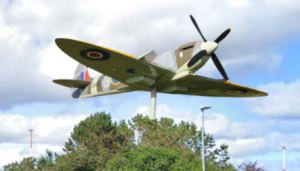Bletchley Park & Ultra
Ultra, was an intelligence project tapping the highest level of encrypted communications of enemy forces, and contributed greatly to victory in World War II.
At Bletchley Park, a British compound located to the north of London, a group of code breakers developed highly-advanced techniques for decrypting intercepted messages that had been coded by German operators. The most important and well known of these decryption machines was Enigma, followed later by sophisticated Tunny machine.
Bletchley Park’s decrypted information code-named Ultra (from “Top Secret Ultra”) is reckoned to have hastened the end of the war by as much as two years.
The German military transmitted thousands of coded messages each day ranging from weather reports, signed orders from Hitler himself to detailed situation reports coming in from the front line.
The Enigma machine was used by Germans to code their military communications during World War II. British mathematician Alan Turing helped break the Enigma code.
The German Enigma machine workings was a descendant of early designs submitted for patent as early as 1918 in Germany. Looking a bit like a strange typewriter, it was battery-powered, had a keyboard and a lamp board with 26 stencilled letters, each with a small lightbulb behind it. As the user typed a message on the keyboard in normal, plain, German, corresponding letters were lit one on the lamp board. An assistant recorded the lit letters to form the enciphered message. The message was now ready to be transmitted in Morse Code.
However, the wiring between the keyboard letter and the stencilled letter was passed through a number of rotating wheels, with the result that the connections were always changing as the wheels rotated. You can find out how Enigma worked.
In 1940 the German Lorenz company produced a state-of-the-art 12-wheel cipher machine: the Schlüsselzusatz SZ40, code-named Tunny by the British. Unlike Enigma, only one operator was required. The Tunny operator simply typed in plain German at the keyboard, with the encryption process and transmittal fully automated with neither the sender or receiver seeing the encrypted message.
Tunny was first put into operational use in June 1941, and by July 1942 Bletchley Park was in a position to decrypt and read the messages. This was down to a series of breakthroughs by British mathematician William Tutte.
Turing’s anti-Enigma machine, called Bombe was of no use against Tunny. Different decrypting machines had to be developed against Tunny. British engineer Thomas Flowers built an electronic computer for Tunny breaking. The Colossus was the world’s first large-scale programmable electronic computer.


